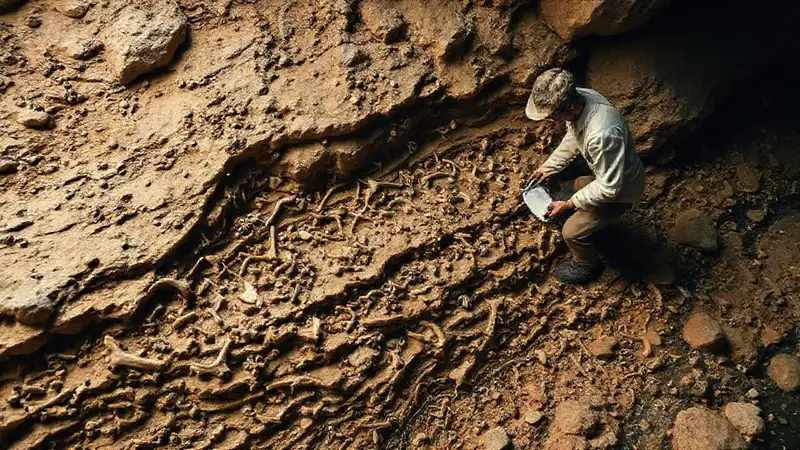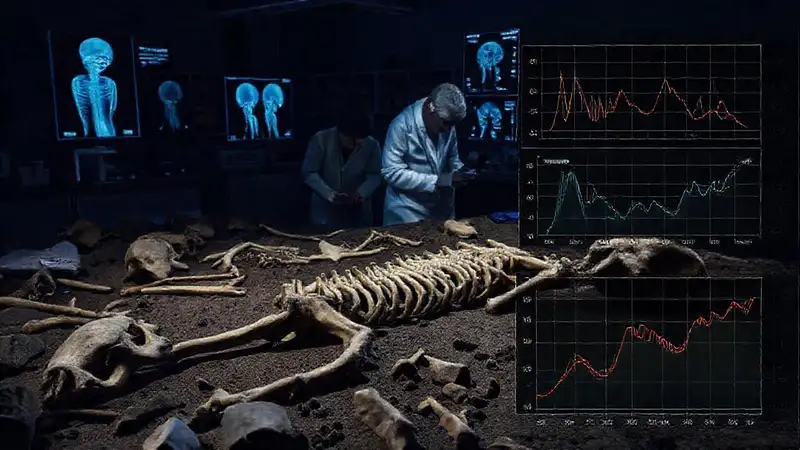The study of paleontology reveals incredible snapshots of the past, and among the most compelling are dinosaur bonebeds – sites where a large number of fossilized bones from multiple individuals are concentrated together. These deposits aren't just random collections of remains; they provide invaluable evidence of catastrophic events that shaped dinosaur populations. Understanding how these events occurred and how they are preserved – or not preserved – is a complex challenge. The very process of fossilization can dramatically alter the appearance and interpretation of these mortality events, making careful analysis crucial.
Bonebeds are particularly significant because they offer a rare glimpse into large-scale predation, environmental disasters, or disease outbreaks that could have decimated dinosaur communities. By examining the bonebeds, paleontologists can reconstruct the circumstances surrounding the demise of these ancient creatures, offering a more complete picture of dinosaur life and evolution. The preservation of these remains, however, is anything but straightforward – it’s a delicate dance between geological processes and the inherent fragility of bone.
Taphonomic Processes and Bone Disarticulation
The initial stage of a bonebed’s formation is often marked by intense physical trauma – the primary driver of the mortality. This could be caused by a single, overwhelming event like a volcanic eruption, a large flood, or, most commonly, a pack of predators. Following the initial shock, the bones are typically disarticulated – meaning they are separated from the skeleton. This disarticulation isn’t a simple, uniform process; it's heavily influenced by factors like the force of the initial impact, the surrounding sediment, and the flexibility of the bones themselves.
Different types of fractures – compression, shearing, impact – provide clues about the nature of the event. For example, widespread compression suggests a slow-moving event like a mudslide, while sharp shearing points to a more sudden, violent impact. Furthermore, the degree of articulation remaining after disarticulation can indicate how long the remains lay exposed to the elements, or how quickly they were disturbed. This taphonomic information is vital to reconstructing the timeline of the event and identifying the primary cause of the bonebed.
Finally, the pattern of bone scatter – the spatial arrangement of the remains – offers further insights into the way the event unfolded. Clusters of bones concentrated in particular areas may indicate the location of the initial impact or the movement of the dead animals. Analyzing these patterns alongside fracture types is key to creating a more complete narrative of the bonebed’s formation.
Preservation Bias and Sedimentation
Not all bonebeds are equally well-preserved. The degree of preservation – or lack thereof – is a critical factor influencing the information we can gather. Sedimentation plays a huge role, with fine-grained sediments (like mud or clay) generally providing better preservation than coarser sediments (like sand or gravel). These fine-grained sediments act as a protective blanket, shielding the bones from erosion and scavenging.
The rate of sedimentation is also crucial. A rapid accumulation of sediment can bury bones quickly, preventing significant decay and preserving finer details. Conversely, slow sedimentation allows for greater decomposition, reducing the preservation of delicate bone structures. Furthermore, the chemical environment of the sediment – pH, oxygen levels – can significantly impact the rate of bone dissolution. Acidic conditions, for example, can accelerate bone decay.
The type of sediment can also reveal details about the event. For example, evidence of ash layers within the bonebed sediment might indicate a volcanic eruption, while evidence of flood deposits could point to a massive inundation. Identifying these specific signatures in the sediment helps paleontologists contextualize the bonebed within a broader geological record.
Diagenesis and Bone Alteration

Once deposited, bones undergo diagenesis – a series of chemical and physical changes that occur over time. These changes can dramatically alter the appearance of the bones, making them difficult to identify and interpret. Common diagenetic alterations include mineral replacement, where original bone material is replaced by minerals like calcite or silica. This process can strengthen the bones, but it also obliterates original textures and features.
Another common alteration is osteoization, where the bone matrix is filled with minerals, often creating a stony or crystalline appearance. While osteoization can preserve the overall shape of the bone, it can also obscure microscopic details. The extent of diagenetic alteration varies significantly depending on the specific environmental conditions, so careful observation and detailed analysis are essential to determine the original bone structure.
Analyzing the diagenetic state of the bones can even provide clues about the age of the bonebed. Certain diagenetic minerals have characteristic formation rates, allowing paleontologists to establish a relative chronology for the event. Recognizing and understanding the effects of diagenesis is therefore vital for accurate interpretation of bonebed records.
Elemental Analysis and Isotope Studies
Modern techniques, like elemental analysis and isotope studies, offer powerful tools for uncovering hidden information about dinosaur bonebeds. Techniques such as X-ray fluorescence (XRF) can be used to map the elemental composition of the bones, revealing areas of alteration or mineralization. This can help identify the diagenetic processes that have affected the bones and provide a more detailed picture of their history.
Stable isotope analysis, particularly of strontium and carbon isotopes, can provide insights into the animals’ diet and geographic origin. Changes in these isotopes can indicate seasonal migration or changes in food sources, offering additional information about the dinosaur community that lived in the area. Furthermore, these techniques can even be used to identify the source of the minerals that have infiltrated the bones during diagenesis, adding another layer of complexity to our understanding. These non-destructive methods offer increasingly detailed evidence.
Conclusion
Dinosaur bonebeds represent a uniquely valuable resource for paleontologists, providing direct evidence of catastrophic events and offering a rare glimpse into the lives and deaths of these magnificent creatures. However, the interpretation of these sites is far from straightforward, and understanding the complex interplay of taphonomic processes, preservation biases, and diagenetic alterations is crucial for accurate reconstruction.
Ultimately, the study of dinosaur bonebeds is a testament to the power of interdisciplinary research, combining geological expertise with advanced analytical techniques to piece together a compelling narrative of the past. Continued research and innovative methodologies will undoubtedly continue to refine our understanding of these extraordinary sites and the dramatic events that shaped them.






Deja una respuesta